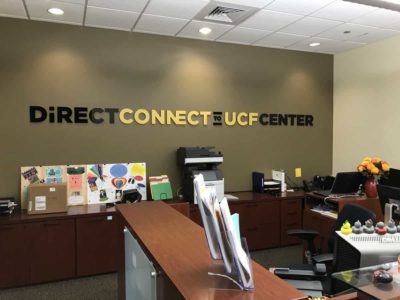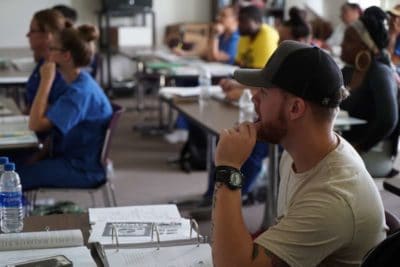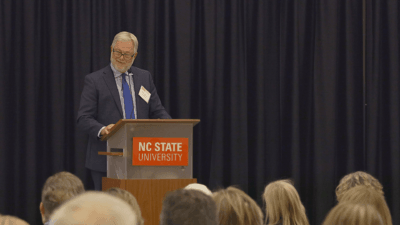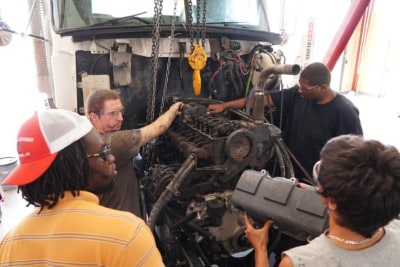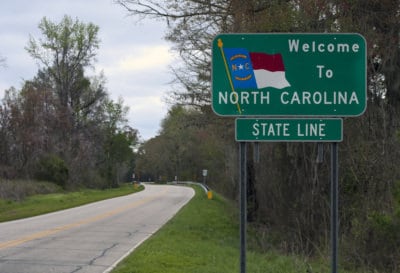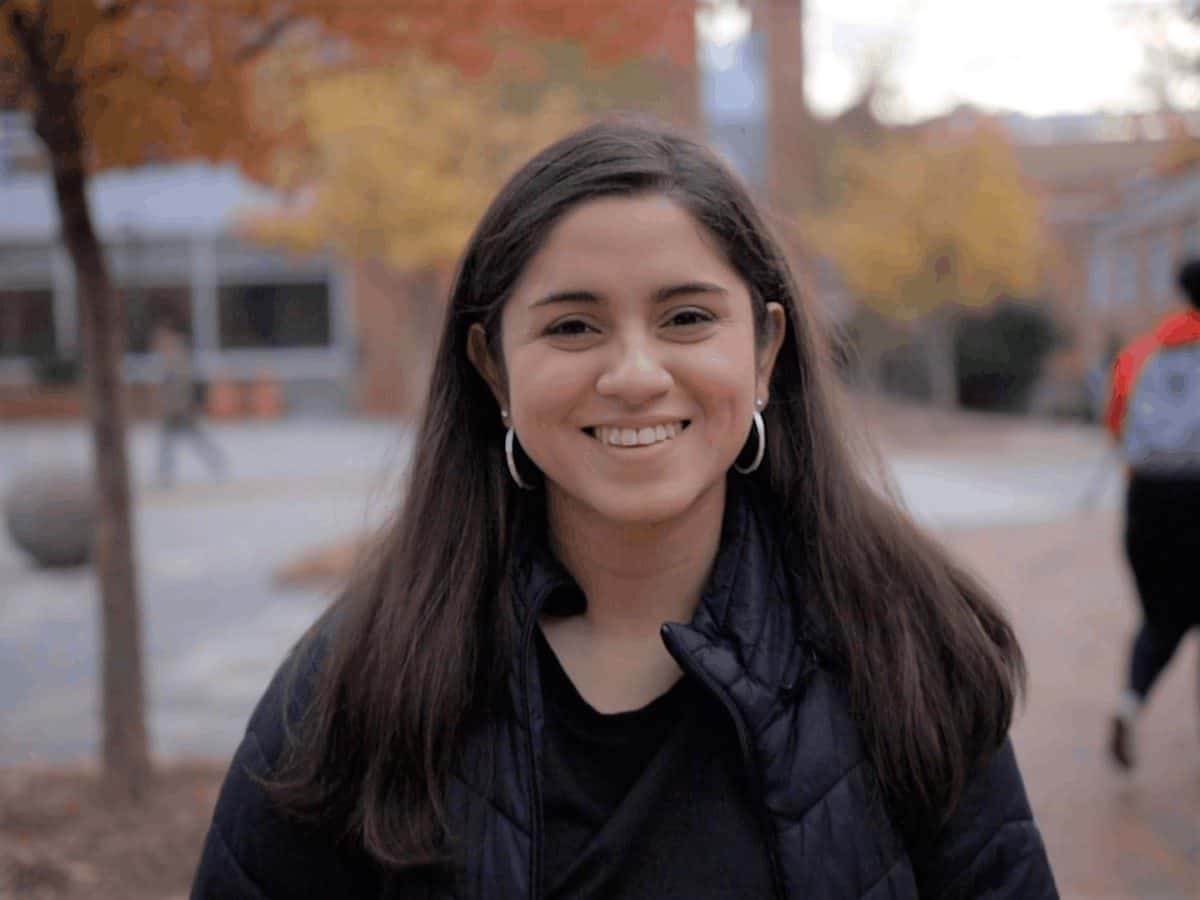

This is the first article in a series on the transfer experiences of North Carolina’s students between community colleges and four-year institutions.
Elizabeth Vanegas wanted to go to college. To get there, she went the way of an early college — a partnership between a public school system and a community college — to earn the first two years of college credit while also earning a high school diploma.
“My family is low-income, and so my parents were unable to afford to put both me and my older sister through four years of college,” Vanegas said. “That’s why I made the decision to go to an early college. I was able to receive my associate without paying for it.”
Vanegas enrolled at North Carolina State University at 18 years old, and she was already a junior by credits thanks to the classes she transferred from the community college.
Her early college performance helped her become part of the Goodnight Scholars Program, which covers her tuition, fees, housing, and meals.
Vanegas is on track to graduate and will be, along with her older sister, the first in her family to earn a college degree.
Because Vanegas plans to stay in North Carolina after graduation, the state will get a significant return on its investment. Vanegas’ degree should help her get a job as a middle school STEM teacher. Research shows that diversity among teachers improves outcomes for students of color, making Vanegas an even more important economic asset to the state and to the next generation of students. Good STEM education increases the long-term economic outlook of a state.
North Carolina needs more success stories like this one because to have enough well-trained workers for a robust economy in 2030, it needs to increase community college transfers and improve transfer graduation rates now.
Unlike Vanegas, too many community college students don’t transfer. North Carolina’s “transfer-out rate,” which measures the percentage of community college students who transfer within a six-year period, is markedly lower than the national average: just 24% compared to 33%.
Is 2+2 a myth?
In addition to needing more community college students to transfer or otherwise earn degrees, research shows the transfer system needs to be more efficient.
Often when talking about transfers, you hear the term 2+2. This is the most basic version of transfer, when a student attends a two-year college and transfers to a university to complete two more years to earn a bachelor’s degree.
That version usually assumes a student enrolls in a community college after graduating high school, doesn’t need remedial coursework before taking college-level classes, either isn’t working or is only working a few hours a week, and knows both what university and what major they want to transfer into — and then is accepted into that university and major and can pay for it.
Real life can be far more complicated. Community college administrators have an axiom they like to use:
Non-traditional students are our traditional students.
Just one in three students who transfer as a junior from a North Carolina community college into the UNC System graduate in two years.
Community colleges are key for continued training or re-skilling for people already in the workforce, according to Peter Hans, president of the North Carolina Community College System. The streamlining of earning credentials and degrees will become more important as the economy changes, he said.
“Think about people’s need to be skilled, re-skilled, upskilled, as the economy and technology just continues to accelerate the pace of change,” Hans said. “People aren’t going to have two years necessarily much less four, or even six, to achieve new credentials, new skills to provide for themselves and their family.”
An all too common obstacle
One challenge facing all potential transfer students, including Vanegas, is that they need to know their target school and major fairly early, according to researcher Mark D’Amico, who worked in community colleges before he began researching them as a professor at the University of North Carolina at Charlotte.
“Students, by that second year [of community college], they really need to know their major and their destination university in order to try to find that best path in the transfer process,” D’Amico said.
Students like Vanegas, who were dual-enrolled high school students taking community college courses, need to think about their target college and major much earlier — one to two years before even “regular” high school students. If the students take the wrong classes or don’t get into their target school, some of their credits may not transfer to their major. That means that college will take longer and be more expensive, diminishing some of the benefits of taking those rigorous classes in high school in the first place.
But the state says it needs hundreds of thousands more students like Vanegas to earn postsecondary degrees, and especially bachelor’s, in order to thrive economically. And there’s really only one avenue to make that happen.
“The community colleges are the only ones with the scale, and the depth and the reach with a base today of 700,000 students to provide that platform to achieve the myFutureNC goal,” Hans said.
Over the course of this week, you’ll hear the stories of Elizabeth, Matt, Anna, and Bailey — four North Carolina students who have already or are planning to transfer from community college to a four-year university. Each has a different background and different goals, but together they illustrate the promises and challenges of transfer.
Our hope with this series is to shine a light on the transfer experience to show how it works, what is working well, and what still needs to be improved.
You’ll learn about the latest revision to the Comprehensive Articulation Agreement (CAA) and whether it has made the process easier and more efficient for students.
You’ll learn about a new trend — the increase in students transferring with an Associate of Applied Science degree — and why that poses challenges for students and colleges.
And you’ll learn about reverse transferring, or the process through which students who transfer before receiving an associate degree can use credits earned at their four-year institution to get their associate degree.
We hope you will stick with us and return each day to EdNC.org to read new articles, watch new videos, and listen to a podcast. At the end of the week, we will send an email with all of the transfer content. Sign up below to receive that in your inbox.
Behind the Story
EdNC’s Taylor Shain conducted the interview and produced the video of Elizabeth Vanegas.
Additional reporting for this article was conducted by Jordan Wilkie.
This article was edited by Molly Osborne, Eric Frederick, and Mebane Rash.


